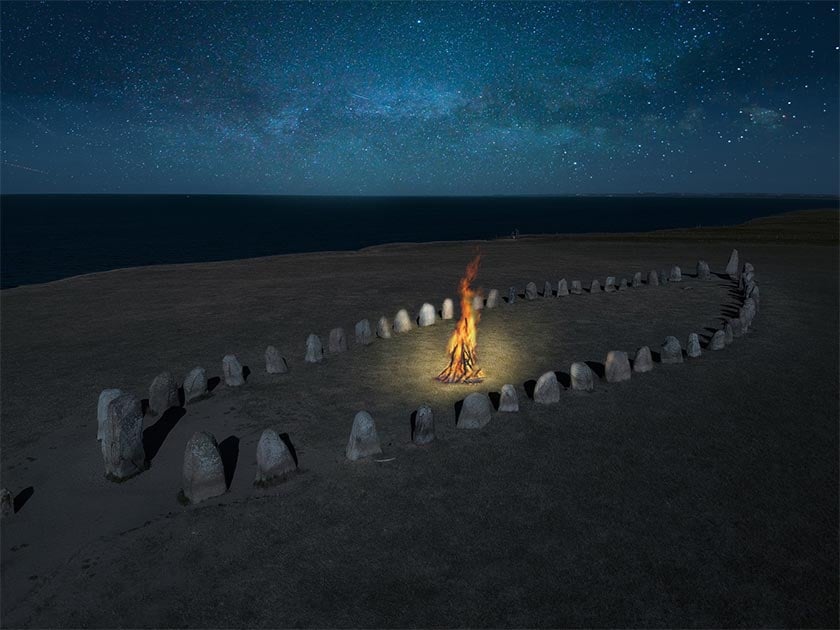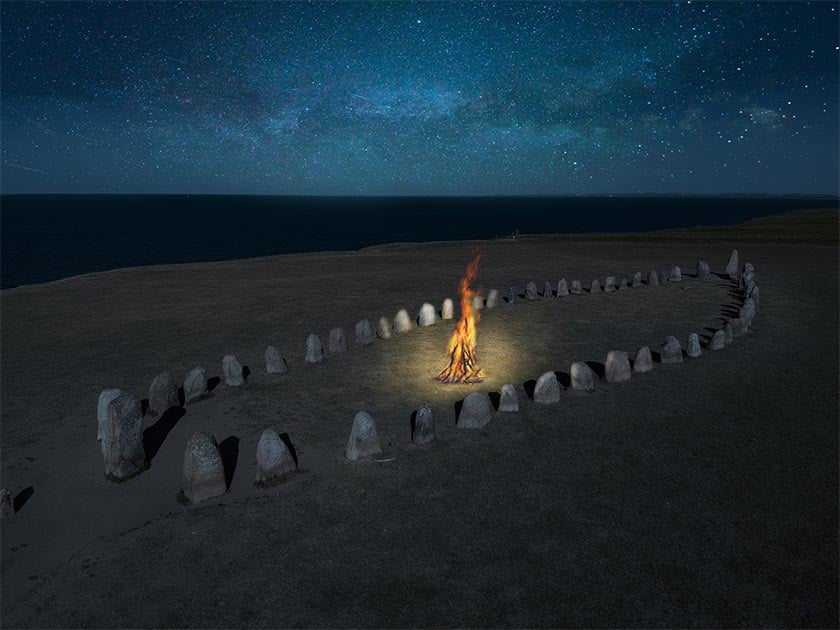

Sweden is famous for the Northern lights, IKEA and their Vikings, known as Varangians. The country has a rich history and many heritage sites, one of which is the enigmatic Ales Stenar, (or Ale’s Stone in English). This Iron Age structure predates the Viking Age and is one of the Scandinavian nation’s most mysterious historical monuments, being associated with a mythical king.
The Legends and History of Ales Stenar
There are no written records regarding the site, but there are a number of legends about this unique structure. While archaeological studies have increased our knowledge of the megalith, there is still a great deal of disagreement on the time frame in which it was erected. Based on the carbon dating of some remains found, it is believed that this site was used in the Neolithic period some 5,500 years ago. Several other remains indicate that the site was used about 1500 years ago, in the Nordic Iron Age, although some believe that the megalith only dates to 500 AD. There are those who believe that the megalith dates to the Bronze Age, and some experts believe that during the Iron Age, local people created the structure out of an earlier Bronze Age monument.
According to local folklore, a mythical king was buried at Ales Stenar. The word ales is believed to mean ‘sanctuary’ in the ancient Nordic language and that those who died in raids and on ship voyages were buried here. The megalith is shaped as the outline of a ship which may symbolize an afterlife.

The stones at Ales Stenar have a celestial alignment. (David Lennartsson / CC BY-SA 3.0)
The stones are aligned to the movement of the sun and the moon and were used to make astronomical observations, which would have been crucial for an agricultural society. The sun goes down at the north-western stones during the summer and rises in the south-western section in the winter. This may also mean that Ales Stenar was an important religious site used for rituals.
The Pre-Viking societies that used this site likely practiced a form of natural religion before the development of the well-known Norse pantheon of Gods. People in the Iron Age and even earlier would have celebrated the solstice and the full moon at Ales Stenar and this theory is backed up by the discoveries of hearths linked to bonfires or ritual fires. Many people now visit the area to observe and celebrate the solstice.
Recently, a 5,500-year-old dolmen has been discovered in the vicinity of the megalith.
What to see at Ales Stenar, Sweden?
The megalith is located on a level field of a hill that overlooks the Baltic Sea. In total there are 59 remaining standing stones, and most are between 2 and 4 feet high (0.7 and 1.4 m), but the two standing stones at the end of the structure that are almost 6 feet (1.8 m) high. The megalith, which is elliptical in shape, covers an area approximately 219 by 62 feet (67 x 19 m).

The large stone marking the end of Ales Stenar (msurkamp / Adobe Stock)
The stones have been engraved with the designs known as cup-marks, common in the Bronze Age, but these have been badly weathered, and the stones may have once been whitewashed. A few of the boulders weigh up to 1.8 tons and it must have taken a considerable degree of effort to create the megalith as some of the stones were quarried from a location 18 miles (30 km) away. This suggests that the megalith could have been built on the orders of a monarch.
How Ales Stenar was constructed remains a mystery. It would have taken a great many laborers and resources to create this monument and ensure that it was in the shape of a ship. Because of its scale and the mysterious reason for its construction, it is known as ‘Sweden’s Stonehenge’.
In recent years a stone has been uncovered that may once have been part of the structure which could help historians reinterpret the megalith. Archaeologists believe that the area has many more secrets to reveal.
Visiting Ales Stenar in Sweden
The location of this interesting site is to the east of the town of Ystad in Kåseberga, in Scania in the south-west of Sweden. There is public transport to Kåseberga, where there is plenty of accommodation. Ales Stenar, is a famous picnic spot, but there are no facilities or refreshments available at the site. No fee is charged to view the ancient monument.